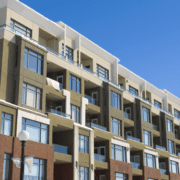Multifamily Housing: Demand and Evolution
The multifamily housing market is maturing and evolving, with an increasing number of investors giving new consideration to this asset class. Some changes are driven by market conditions, some by consumer preferences, and some by changing demographics. But amidst these various changes, the multifamily sector remains in a continuous state of growth with the development of 2.34 million new apartments in the last decade alone.
Read ahead to learn what is driving this sector’s growth, the different ways the market is evolving to accommodate these changing demands and expectations, and why investors should consider multifamily investments.
What is Driving Demand for Multifamily Housing?
There are several factors that contribute to the rapidly increasing demand for multifamily housing. These factors include:
1.) Student Loan Debt
We are in a “student loan debt crisis” with 45 million Americans – and counting – owing on their college loans. Nationwide, more than $1.5 trillion in student debt has accumulated, making it the second highest consumer debt category, preceded only by mortgage debt.
Today, high levels of student debt are a leading factor in keeping young adults in multifamily housing longer than previous generations. In fact, the average person rents for 6 years before buying a home. Additionally, 12.3% of Millennial renters plan to rent permanently, up from 10.7% in 2018.
2.) Stagnant Wage Growth
Despite increasing tuition rates and, hence, rising student loan amounts, wage growth throughout the U.S. has remained stagnant. Today, the average Millennial earns a little over $35,000 a year and has an average net worth of less than $8,000. Because of low, stagnant wages, 62% of Millennials are reportedly living paycheck to paycheck and less than half feel financially stable.
Between staggering student loan debt, static wages, and high costs of living, many people are struggling to make ends meet. And when the opportunity to relocate for a better paying job presents itself, apartment living makes uprooting and moving across the state or even across the country easier and more convenient than when owning a home.
3.) Smaller Household Sizes
According to Bloomberg, the number of persons per household has declined steadily since the 1960s, reaching a plateau of about 2.5 people per family. Because the average household size is much smaller than it once was, fewer people see a need to purchase a single-family home, which explains why more rental apartments were built in 2017 than in any year since 1999.
The US Census Bureau projects that by the year 2030, international migration will outpace natural population growth. This means that, for at least the next 12 years, we will continue to see smaller family sizes as Baby Boomers age and millennials do not have children at a rate to replace them
While the factors pushing people to maintain smaller household sizes are expected to hold, the lifestyle choices Millennials have adapted because of them also help to hold household size in place and to keep people seeking multifamily housing that suites their preferences.
How is the Multifamily Market Evolving?
The multifamily market is anticipated to grow and evolve for many years to come. Thus, firms in the multifamily space should adapt long-term perspectives to not only survive disruptive technology innovations and shifting market conditions, but also to capitalize on them.
Read ahead to learn two ways the multifamily market is evolving to accommodate today’s changing demands and expectations.
1.) Services, Amenities, and Experiences
The technological disruption of commercial real estate has had a profound impact on the multifamily sector. As such, apartments’ services, amenities, and overall tenant experiences have evolved to include and cater to modern tenants’ desire for technology. These services, amenities, and experiences include smart apartments, personalization, WiFi connections, delivery lockers, and smart thermostats. With seamless connectivity among devices, building systems, residents, and management, the evolution and inclusion of technology in multifamily residences represents a fundamental shift in today’s market.
2.) Smaller Units in Urban Locations
The market is not shifting toward larger units but, rather smaller, more cost-efficient units in urban locations. This is because the cost of living, particularly in major cities across the United States, has been on the rise over the last few years – but so has the desire for urban living.
The development of micro-apartments is a convenient solution for tenants who desire to live in high-density urban areas with affordable, quality living. Micro-apartments are typically located in thriving urban areas with convenient access to attractions including restaurants, bars, and entertainment. Offsetting the limited amount of space by their proximity to popular locations, convenience is one of the driving forces behind the success of these tiny units.
Why Should Investors be Interested?
For investors, the multifamily housing market offers tremendous opportunity. In fact, it is one of the most active investment classes for both private and institutional investors. No wonder, as the industry’s 35 million residents drive a $1 trillion dollar annual contribution to the US economy, according to real estate brokerage Marcus & Millichap. Additionally, nearly 60% of all commercial lending dollars (or about $400 billion) is directed towards multifamily projects.
In 2019, multifamily was the top target asset class with 68.3% of investors indicating that they would be allocating investment dollars into one or more multifamily deals during that year. One reason that the multifamily sector is in high demand is because of its increasing diversification. With the growth of niche asset classes such as student and senior housing facilities, co-living spaces, and micro-unit apartments, the multifamily sector is expected to continue gaining the interest of individual and institutional investors alike.











